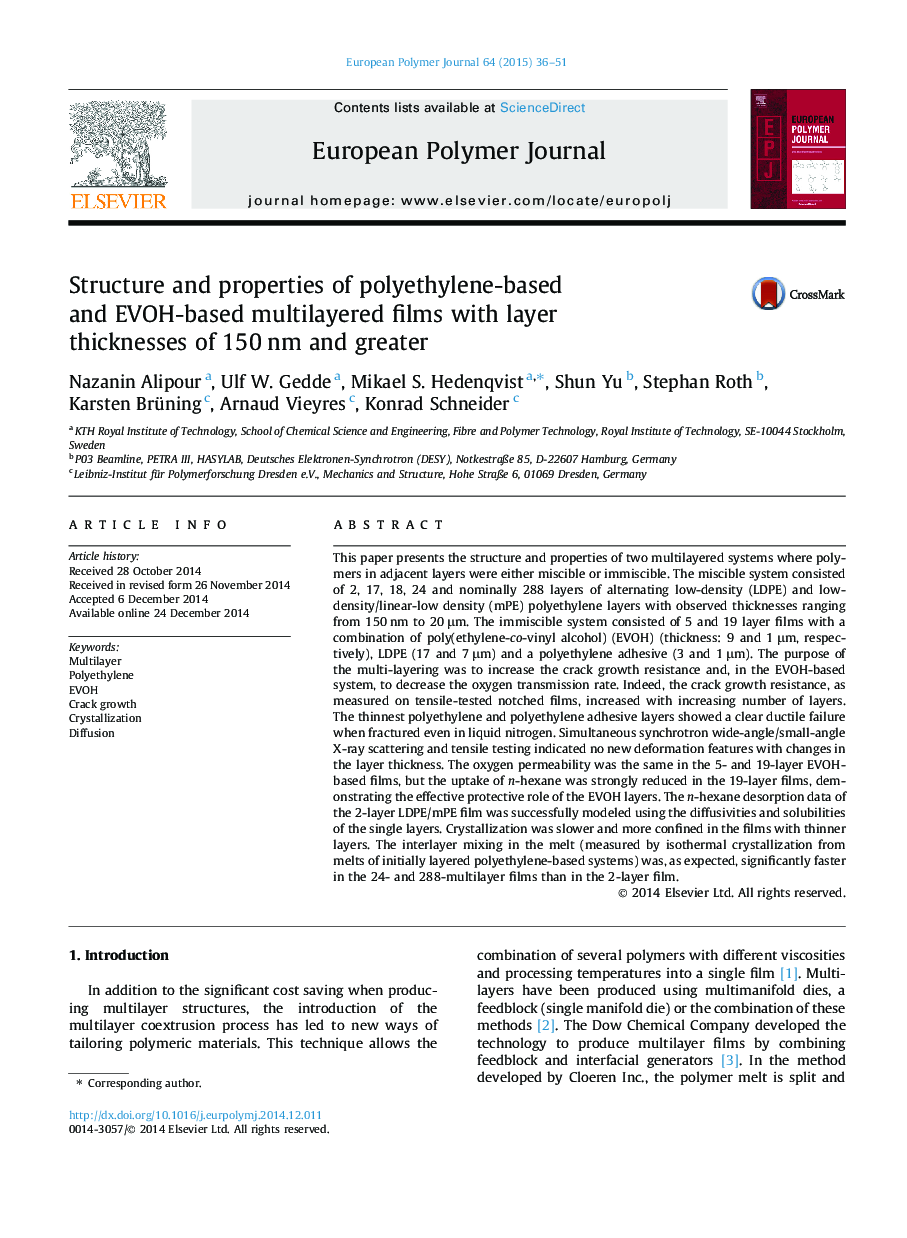| Article ID | Journal | Published Year | Pages | File Type |
|---|---|---|---|---|
| 1395270 | European Polymer Journal | 2015 | 16 Pages |
•Multilayers improve crack growth resistance of polyethylene- and EVOH-based films.•Thinnest layers show ductile behavior even under exposure to liquid nitrogen.•Crystallization was slower and more confined in the thinnest layers.•The use of repeated EVOH/adhesive layers reduced solvent uptake.
This paper presents the structure and properties of two multilayered systems where polymers in adjacent layers were either miscible or immiscible. The miscible system consisted of 2, 17, 18, 24 and nominally 288 layers of alternating low-density (LDPE) and low-density/linear-low density (mPE) polyethylene layers with observed thicknesses ranging from 150 nm to 20 μm. The immiscible system consisted of 5 and 19 layer films with a combination of poly(ethylene-co-vinyl alcohol) (EVOH) (thickness: 9 and 1 μm, respectively), LDPE (17 and 7 μm) and a polyethylene adhesive (3 and 1 μm). The purpose of the multi-layering was to increase the crack growth resistance and, in the EVOH-based system, to decrease the oxygen transmission rate. Indeed, the crack growth resistance, as measured on tensile-tested notched films, increased with increasing number of layers. The thinnest polyethylene and polyethylene adhesive layers showed a clear ductile failure when fractured even in liquid nitrogen. Simultaneous synchrotron wide-angle/small-angle X-ray scattering and tensile testing indicated no new deformation features with changes in the layer thickness. The oxygen permeability was the same in the 5- and 19-layer EVOH-based films, but the uptake of n-hexane was strongly reduced in the 19-layer films, demonstrating the effective protective role of the EVOH layers. The n-hexane desorption data of the 2-layer LDPE/mPE film was successfully modeled using the diffusivities and solubilities of the single layers. Crystallization was slower and more confined in the films with thinner layers. The interlayer mixing in the melt (measured by isothermal crystallization from melts of initially layered polyethylene-based systems) was, as expected, significantly faster in the 24- and 288-multilayer films than in the 2-layer film.
Graphical abstractFigure optionsDownload full-size imageDownload as PowerPoint slide
